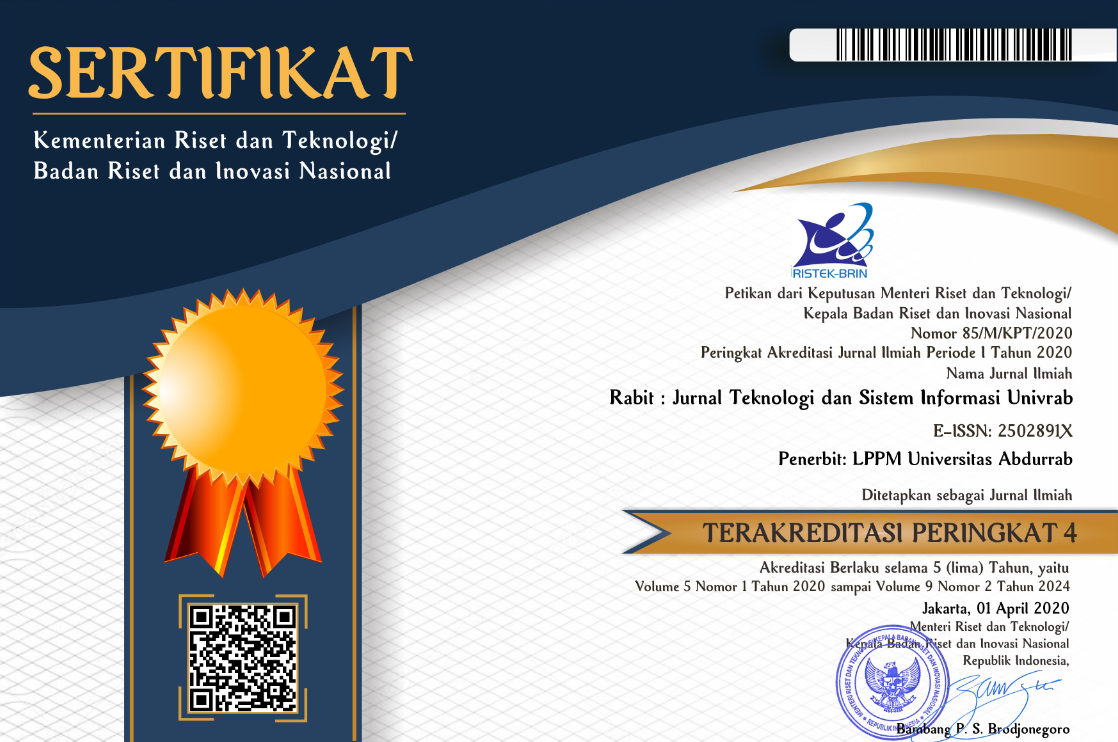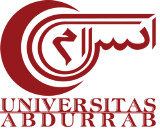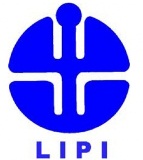PERANCANGAN LEARNING MANAGEMENT SYSTEM SEBAGAI PENDUKUNG PEMBELAJARAN JARAK JAUH
Abstract
The distance education system (PJJ), which is perceived as a 21st century innovation, is an education system that has broad outreach across space, time and socioeconomics. The PJJ system opens access to education for anyone, anywhere and at any time. In 2018, the gross enrollment rate of higher education in Indonesia will reach 33.3%. still far from achieving the national target, which is 50% by 2024. This research focuses on designing a Learning Management System (LMS) to support the application of distance learning. The LMS that is developed will be able to support the preparation, presupposition and distribution of teaching materials, the process of learning assessment in various forms of learning evaluation models and to support interactions between instructors and students through various forms of interaction using audio visual media. The results obtained are an LMS that is able to meet the needs of teaching and learning in distance and blended learning.
References
A. Taufik, “Perspektif Tentang Perkembangan Sistem Pembelajaran Jarak Jauh Di Kabupaten Kutai Kartanegara Kalimantan Timur,” J. Pendidikan&Konseptual, vol. 3, no. 2, pp. 88–98, 2019.
BPS, “Angka Partisipasi Kasar Pendidikan Tinggi,” 2019.
I. P. Ramayasa, “Evaluation Model of Success and Acceptance of E-Learning,” J. Theor. Appl. Inf. Technol., vol. 3182, no. 3, pp. 462–469, 2015.
R. . Utomo, “MOOCs as an alternative to distance learning model for University in Indonesia,” in 2014 International Conference on ICT For Smart Society (ICISS), 2014, pp. 182–184.
B. Saputro and A. T. Susilowati, “Effectiveness of Learning Management System (LMS) on In-Network Learning System (SPADA) based on scientific,” J. Educ. Gift. Young Sci., vol. 7, no. 3, pp. 481–498, 2019.
M. Ujulawa and Matilda, “Perancangan Learning Management System (LMS) Menggunakan Moodle Pada Sekolah Tinggi Tarakanita” Jurnal Ilmiah Komputasi, vol. 16, no. 1, 2017.
F.K Komendangi, R. Molenaar and L. Lengkey, “Analisis dan Perancangan Aplikasi E-Learning Berbasis Learning Management System (LMS) Moodle Di Program Studi Teknik Pertanian Universitas Sam Ratulangi” COCOS, vol. 1, no. 3, 2017.
P. Chyan and S. C. Sumarta, “Rancang bangun mesin pencari citra dengan pendekatan temu balik berbasis konten,” TEMATIKA, vol. 3, no. 2, 2017.
P. Chyan and S. C. Sumarta, “Sistem temu balik citra berbasis isi citra menggunakan fitur warna dan jarak histogram,” TEMATIKA, vol. 2, no. 2, pp. 31–38, 2016.
P. Chyan, “Perancangan sistem informasi perparkiran pada universitas atma jaya makassar,” TEMATIKA, vol. 1, no. 1, 2016.

This work is licensed under a Creative Commons Attribution-NonCommercial-ShareAlike 4.0 International License.
Copyright Notice
The copyright of the received article shall be assigned to the publisher of the journal. The intended copyright includes the right to publish the article in various forms (including reprints). The journal maintains the publishing rights to published articles. Therefore, the author must submit a statement of the Copyright Transfer Agreement.*)
This work is licensed under a Creative Commons Attribution-NonCommercial-ShareAlike 4.0 International License.
In line with the license, authors and any users (readers and other researchers) are allowed to share and adapt the material only for non-commercial purposes. In addition, the material must be given appropriate credit, provided with a link to the license, and indicated if changes were made. If authors remix, transform or build upon the material, authors must distribute their contributions under the same license as the original.
Please find the rights and licenses in RABIT : Jurnal Teknologi dan Sistem Informasi Univrab. By submitting the article/manuscript of the article, the author(s) accept this policy.
1. License
The non-commercial use of the article will be governed by the Creative Commons Attribution license as currently displayed on Creative Commons Attribution-NonCommercial-ShareAlike 4.0 International License.
2. Author’s Warranties
The author warrants that the article is original, written by stated author(s), has not been published before, contains no unlawful statements, does not infringe the rights of others, is subject to copyright that is vested exclusively in the author and free of any third party rights, and that any necessary written permissions to quote from other sources have been obtained by the author(s).
3. User Rights
RABIT's spirit is to disseminate articles published are as free as possible. Under the Creative Commons license, RABIT permits users to copy, distribute, display, and perform the work for non-commercial purposes only. Users will also need to attribute authors and RABIT on distributing works in the journal.
4. Rights of Authors
Authors retain all their rights to the published works, such as (but not limited to) the following rights;
- Copyright and other proprietary rights relating to the article, such as patent rights,
- The right to use the substance of the article in own future works, including lectures and books,
- The right to reproduce the article for own purposes,
- The right to self-archive the article,
- The right to enter into separate, additional contractual arrangements for the non-exclusive distribution of the article's published version (e.g., post it to an institutional repository or publish it in a book), with an acknowledgment of its initial publication in this journal (RABIT : Jurnal Teknologi dan Sistem Informasi Univrab).
5. Co-Authorship
If the article was jointly prepared by other authors, any authors submitting the manuscript warrants that he/she has been authorized by all co-authors to be agreed on this copyright and license notice (agreement) on their behalf, and agrees to inform his/her co-authors of the terms of this policy. RABIT will not be held liable for anything that may arise due to the author(s) internal dispute. RABIT will only communicate with the corresponding author.
6. Royalties
This agreement entitles the author to no royalties or other fees. To such extent as legally permissible, the author waives his or her right to collect royalties relative to the article in respect of any use of the article by RABIT.
7. Miscellaneous
RABIT will publish the article (or have it published) in the journal if the article’s editorial process is successfully completed. RABIT's editors may modify the article to a style of punctuation, spelling, capitalization, referencing and usage that deems appropriate. The author acknowledges that the article may be published so that it will be publicly accessible and such access will be free of charge for the readers as mentioned in point 3.
 PDF (Bahasa Indonesia)
PDF (Bahasa Indonesia)
 Abstract views: 871
Abstract views: 871
 downloads: 849
downloads: 849

 :
:












